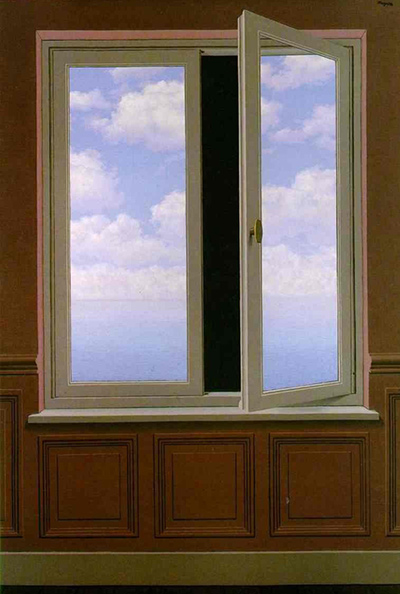Rene Magritte was born in Belgium in 1898 and worked as a commercial artist for many years before going solo to produce personal works.
Living in the surrealist era, he adopted the surrealist school of thought in his artworks but gave a strange twist to it. Many of his images depict ordinary objects placed in a shockingly surprising context. According to him, an object will only derive meaning according to its environment.
Nevertheless, Magritte sought to express his distaste for the modern way of life. He deliberately attempted to disparage man's latest inventions, as is evident in the painting, The Telescope.
The missing telescope
Although the title of the painting is The Telescope, the telescope is conspicuously missing. Instead, the artist depicts two glass windows that reflect the blue sky with white clouds outside. The window on the right is partially open, revealing the night outside. The audience would have expected the continuation of the blue sky instead of the dark patch.
It's all vanity
The mystery of the missing telescope serves to jolt the audience into a brainstorming session to try and piece together the disjointed message in the picture. The realisation that a telescope would not be useful in the picture hits home with a resounding echo: the world outside the window is dark. A telescope helps people to focus on distant objects in space. Magritte seems to be questioning the rationale behind the need for the device because the objects in space don't seem to be of much help. The reflection on the windows is an illusion, and the reality is rather stark –darkness.
Frustrated desires
Rene appears to be taking a jibe at man's poignant curiosity for nature and primal desires. Man invents a telescope to satisfy his curiosity of outer space, only to find that it is all in vain. What the eyes can see is only an illusion, but space holds nothing of importance to man's existence. What people should realise is that many of the modern inventions are not necessary because there is nothing beyond their existence. The Telescope is one of the many paintings that reflect Magritte's cynical attitude towards modern inventions and way of life. Many of the desires that man crave for are not that important.




